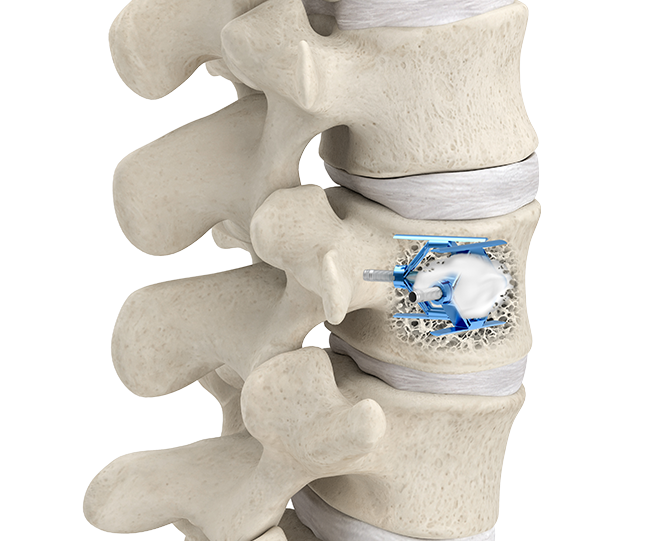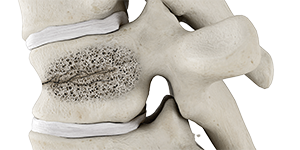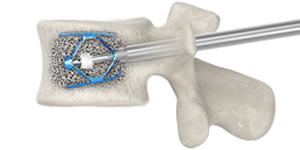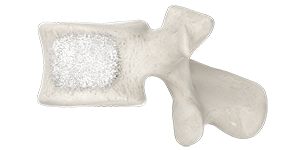
SpineJack® procedure
Taking restoration to new heights
Pain doesn't have to be permanent. You can get up to 12 months of relief with SpineJack.
For decades, osteoporotic vertebral compression fracture (VCF) treatment has focused primarily on pain management. SpineJack is far different because it gives doctors the tools to restore vertebral body height, so your anatomy can be close to what it was before the fracture.
Benefits
Since having one or more VCFs increases the risk for developing another spinal fracture, it is important to get an early diagnosis.2 Don’t let your pain become a part of your life. Take control and talk with a physician about the SpineJack procedure.
What to expect with a SpineJack procedure
View the step-by-step procedure

Before the procedure
Your doctor will do a physical exam and order imaging tests, such as an X-ray, MRI, CT scan or bone scan. These tests help to determine the location of the fractured vertebra, how recently the fracture occurred and whether or not vertebral augmentation with the SpineJack implant is the most appropriate treatment.

During the procedure
Generally, vertebral augmentation is performed while you are awake but sedated and your back is numbed with local anesthetic. Using X-ray guidance, two expandable implants are inserted into the fractured vertebra through small incisions. The implants are then expanded, restoring the vertebral anatomy and creating a cavity. The area surrounding the implants is then filled with bone cement to stabilize the fracture.3 As it hardens, the bone cement forms an internal cast that holds the vertebra in place. Following the procedure, the incisions are covered with bandages.

After the procedure
For a short period of time, you’ll lie on your back while the bone cement continues to harden. Your vital signs will be monitored. Typically, patients are able to go home within a few hours of treatment.

